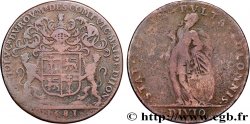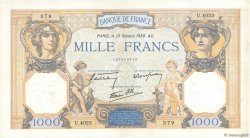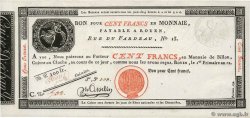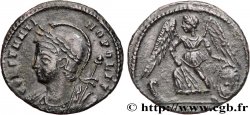Назад 1/1
fjt_01741 - DIJON (MAIRES DE ... et divers) Ésmé Joly 1616
недоступный.
Товар уже продан в нашем интернет-магазине (2011)
Цена: : 14.00 €
Товар уже продан в нашем интернет-магазине (2011)
Цена: : 14.00 €
Тип Ésmé Joly
Дата: 1616
Металл: brass
Диаметр: 26,80 mm
Ориентация осей монеты: 6 h.
Век: lisse
Редкость: R1
Ссылки в каталоге: :
Лицевая сторона
Аверс: легенда: MAGNES. AMORIS. AMOR. 1616.
Аверс: описание: Armes de Joly.
Аверс: перевод: L'Amour attire l'Amour (Cantique des Cantiques ch.2,2).
Обратная сторона
Реверс: легенда: ESME. IOLY. CON. ME. D. COMPTES. VICONTE. MAIEUR. DE. DIION.
Реверс: Описание: Armes de Dijon.
Комментарий
Esmé Joly, était maître ordinaire en la Chambre des comptes, et fut maire en 1605-1606 puis réélu le 21 juin 1614. Ses armes portent d’azur au lys naturel d’argent. La légende du revers reprend le Cantique des Cantiques, ch. 2, v. 2
Les maires de Dijon
Dès l’époque de la naissance de la féodalité, la ville de Dijon possédait un maire et en général vingt magistrats municipaux, ou échevins. Ces magistrats sont confirmés en 1187, lorsqu’une charte de commune est accordée par le duc Hugues III. En 1192, pour la première fois, le maire dijonnais est élu.
A la fin du XIIIe siècle, ce maire prend le titre de vicomte maïeur, confirmé en 1477-1479 par Louis XI, qu’il gardera jusqu’en 1789. Depuis la fin du XVe siècle (1491), la charge de vicomte maïeur est anoblissante ainsi que celle d’échevin à compter du XVIe siècle. Le vicomte maïeur avait le droit de haute, moyenne et basse justice, le droit de scel et de visite. Les clefs de la ville lui sont confiées et il dirige les archers ainsi que les compagnies des sept quartiers, cette fonction militaire étant importante jusqu’au XVIIe siècle.
Fonction élective, le vicomte maïeur est élu par les habitants, ni mendiants, ni étrangers, qui payent la taille, en général la veille de la Saint-Jean. Cette élection a lieu sur le parvis de l'église saint Philibert. A partir de 1669, il est permis au maire de porter "une robe longue de satin plein, de couleur violet, doublée de satin rouge cramoisi, comme le prévôt des marchands de Lyon, avec chaperon de même étoffe et couleur bordée d’hermine" afin de se distinguer des habitants.
En 1692, la fonction de vicomte maïeur est transformée en office héréditaire tandis que l’élection n’est plus alors qu’une confirmation du choix royal fait par le gouverneur au nom du roi.
Voir leur liste complète à http://fr.wikipedia.org/wiki/Liste_des_maires_de_Dijon.
Esmé Joly, was a master in the ordinary of the Chamber of Accounts, and was mayor in 1605-1606 then re-elected on June 21, 1614. His coat of arms is azure with a natural lily argent. The legend on the reverse repeats the Song of Songs, ch. 2, v. 2 The mayors of Dijon From the time of the birth of feudalism, the city of Dijon had a mayor and generally twenty municipal magistrates, or aldermen. These magistrates were confirmed in 1187, when a municipal charter was granted by Duke Hugh III.. In 1192, for the first time, the mayor of Dijon was elected.
At the end of the 13th century, this mayor took the title of viscount mayor, confirmed in 1477-1479 by Louis XI, which he kept until 1789. Since the end of the 15th century (1491), the position of viscount mayor has been ennobling, as has that of alderman since the 16th century.. The Viscount Mayor had the right of high, middle and low justice, the right of seal and visitation. The keys to the city were entrusted to him and he commanded the archers as well as the companies of the seven districts, this military function being important until the 17th century..
An elective function, the Viscount Mayor is elected by the inhabitants, neither beggars nor foreigners, who pay the tax, generally on the eve of Saint John.. This election takes place on the forecourt of the Saint Philibert church. From 1669, the mayor was allowed to wear \\\"a long robe of full satin, purple in color, lined with crimson red satin, like the provost of the merchants of Lyon, with a chaperon of the same fabric and color edged with ermine\\\" in order to distinguish himself from the inhabitants..
In 1692, the function of Viscount Mayor was transformed into a hereditary office while the election was then only a confirmation of the royal choice made by the governor in the name of the king..
See their full list at http://fr. Wikipedia. org/wiki/List_of_mayors_of_Dijon
Les maires de Dijon
Dès l’époque de la naissance de la féodalité, la ville de Dijon possédait un maire et en général vingt magistrats municipaux, ou échevins. Ces magistrats sont confirmés en 1187, lorsqu’une charte de commune est accordée par le duc Hugues III. En 1192, pour la première fois, le maire dijonnais est élu.
A la fin du XIIIe siècle, ce maire prend le titre de vicomte maïeur, confirmé en 1477-1479 par Louis XI, qu’il gardera jusqu’en 1789. Depuis la fin du XVe siècle (1491), la charge de vicomte maïeur est anoblissante ainsi que celle d’échevin à compter du XVIe siècle. Le vicomte maïeur avait le droit de haute, moyenne et basse justice, le droit de scel et de visite. Les clefs de la ville lui sont confiées et il dirige les archers ainsi que les compagnies des sept quartiers, cette fonction militaire étant importante jusqu’au XVIIe siècle.
Fonction élective, le vicomte maïeur est élu par les habitants, ni mendiants, ni étrangers, qui payent la taille, en général la veille de la Saint-Jean. Cette élection a lieu sur le parvis de l'église saint Philibert. A partir de 1669, il est permis au maire de porter "une robe longue de satin plein, de couleur violet, doublée de satin rouge cramoisi, comme le prévôt des marchands de Lyon, avec chaperon de même étoffe et couleur bordée d’hermine" afin de se distinguer des habitants.
En 1692, la fonction de vicomte maïeur est transformée en office héréditaire tandis que l’élection n’est plus alors qu’une confirmation du choix royal fait par le gouverneur au nom du roi.
Voir leur liste complète à http://fr.wikipedia.org/wiki/Liste_des_maires_de_Dijon.
Esmé Joly, was a master in the ordinary of the Chamber of Accounts, and was mayor in 1605-1606 then re-elected on June 21, 1614. His coat of arms is azure with a natural lily argent. The legend on the reverse repeats the Song of Songs, ch. 2, v. 2 The mayors of Dijon From the time of the birth of feudalism, the city of Dijon had a mayor and generally twenty municipal magistrates, or aldermen. These magistrates were confirmed in 1187, when a municipal charter was granted by Duke Hugh III.. In 1192, for the first time, the mayor of Dijon was elected.
At the end of the 13th century, this mayor took the title of viscount mayor, confirmed in 1477-1479 by Louis XI, which he kept until 1789. Since the end of the 15th century (1491), the position of viscount mayor has been ennobling, as has that of alderman since the 16th century.. The Viscount Mayor had the right of high, middle and low justice, the right of seal and visitation. The keys to the city were entrusted to him and he commanded the archers as well as the companies of the seven districts, this military function being important until the 17th century..
An elective function, the Viscount Mayor is elected by the inhabitants, neither beggars nor foreigners, who pay the tax, generally on the eve of Saint John.. This election takes place on the forecourt of the Saint Philibert church. From 1669, the mayor was allowed to wear \\\"a long robe of full satin, purple in color, lined with crimson red satin, like the provost of the merchants of Lyon, with a chaperon of the same fabric and color edged with ermine\\\" in order to distinguish himself from the inhabitants..
In 1692, the function of Viscount Mayor was transformed into a hereditary office while the election was then only a confirmation of the royal choice made by the governor in the name of the king..
See their full list at http://fr. Wikipedia. org/wiki/List_of_mayors_of_Dijon








 Cообщить об ошибке
Cообщить об ошибке Распечатать страницу
Распечатать страницу Отправить мой выбор
Отправить мой выбор Задать вопрос
Задать вопрос Consign / sell
Consign / sell
 Информация
Информация















